Laptop Mag Verdict
This executive-class business system offers plenty of style and innovation, but it doesn't provide much performance to offset its high price.
Pros
- +
Stylish, thin design
- +
Very good speakers
- +
Power-saving instant-on mode
- +
EdgeTouch sensor provides shortcuts
- +
Wireless Inductive Charging Stand and Wireless Docking Station
Cons
- -
Runs hot
- -
Short battery life
- -
No memory card slot
- -
Very expensive
Why you can trust Laptop Mag
Executives looking to impose their status on underlings should take a gander at the Dell Latitude Z600. This strikingly thin 16-inch notebook was tailor-made for the corner office. A soft touch finish, chrome accents, and two cool technologies--induction charging and wireless USB--will inspire envy. Plus, you can get some work done in instant-on mode, which uses its own ARM processor, to save battery life. Unfortunately, at $3,806 as configured ($1,799 starting price), this notebook doesn't come cheap and its endurance is lacking. Does this luxury business laptop's strengths outweigh the drawbacks?
Design
Even from afar, you can see that the Z600 is a stylish machine. The black-cherry cover has a soft touch finish, and is set off by angular chrome accents that bracket the battery. While it's just 0.6 inches thin, it also has a very large footprint at 15.6 x10.7 inches, similar to the Acer Aspire Timeline 5810T. In some respects, the rear design makes the Z600 reminiscent of a very expensive portfolio; even the power brick has a glossy black finish.
At 5.0 pounds with the extended battery and 4.6 pounds with the regular battery, the Z600 isn't as light as an ultraportable, but neither is it uncomfortable to carry around. However, its large footprint makes it difficult to fit in smaller messenger bags.
Too bad there's no latch securing the lid to the deck; holding the notebook upright by the hinge causes the lid to open slightly. The extended battery alsowobbled when we held the notebook toward the hinge. We expect a more thoughtful design from something this expensive.
This same soft touch finish covers the keyboard deck, and is bordered by brushed metal. Above the black island-style keyboard are haptic volume controls that light up and buzz gently when pressed. To the right of the keyboard is a fingerprint reader, and to the right of the touchpad is a Smart Card reader.
Touching the bottom right edge of the bezel activates one of the unique features of the Z600, Dell EdgeTouch. A small rectangle brings up five icons along the right edge: multimedia controls, Dell Capture utility, Dell EdgeTouch utility, Dell FaceAware utility, and Internet Explorer. Pressing the bezel adjacent to an icon launches it. You can also modify what app icons appear. It's a clever way to quickly access often-used apps and utilities without the need for a touchscreen (though for this price we might expect one).
Heat
Being as thin as it is, there's not much room on the inside of the Z600 to dissipate heat. After playing a Hulu video at full screen for 15 minutes, the touchpad measured 86 degrees Fahrenheit, the space between the G and H keys was 96 degrees, and the middle of the bottom was a scorching 116 degrees. We consider anything above 100 degrees to be unacceptable.
Keyboard and Touchpad
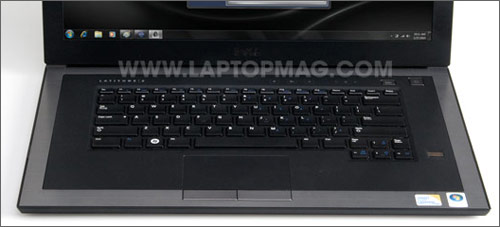
Click to enlarge
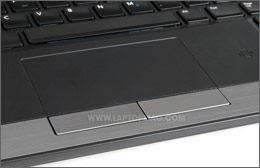
Click to enlargeTyping on the Z600 was a pleasure; the black glossy keys were well spaced and had excellent response. It was also easy to type in the dark, as the letters and numbers on the keys lit up when we pressed them. Using the Dell ControlPoint utility, you can also toggle the backlight, define when it turns off,and determine how bright it gets. Our only nitpick is that the keys picked up fingerprint smudges.
The touchpad on the Z600 is quite large at 3.6 x 2.0 inches, and its matte surface had very low friction. Just be careful when you're typing; more than once our thumb brushed up against it and moved the cursor to a different place in the document. The mouse buttons below are also brushed metal, and blend nicely with the border. They, too, were snappy without being stiff.
Display and Audio
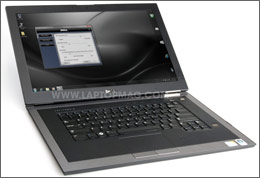
Click to enlarge
The 16.0-inch, 1600 x 900 display on the Z600 is amazingly spacious given the thin profile of the system. We were able to comfortably have a Web page and a document open side by side. This notebook was made for Windows 7's Snap feature, and we can also see owners using it to give presentations for small groups.
Watching videos, both streaming over the Web and off the hard drive, was a pleasant experience. Colors from the LED-backlit display were bright and crisp during an episode of Saturday Night Live as well as The Magic of Flight, a 1080p clip from Microsoft's Windows WMVHD Content Showcase.
Usually speakers on systems as thin as the Z600 are pretty anemic. We were pleasantly surprised, though, at the speakers on the front underside of the system. They were positively booming whether we were watching movies or listening to music, offering very good reproduction considering their overall size.
Ports
There isn't much in the way of ports on the Z600: just one USB, an eSATA/USB, DisplayPort, Ethernet, and a combo headphone/mic port. We're somewhat surprised that there isn't even a memory card slot. However, the Z600 has a trick up its sleeve: wireless USB can be used with an accessory such as the Dell Wireless Docking Station (more on that later).

Click to enlarge
Webcam and Dell Capture
The 2.0-megapixel webcam delivered accurate, if slightly grainy video. The camera automatically adjusts focus and lighting based on where your face is in the frame, and Dell's Webcam Central utility makes it easy to adjust settings such as backlight, brightness, and contrast.
We especially like the included Dell Capture technology. We held up a business card to the Webcam and aligned it to correspond with a white rectangle on the screen. After holding it steady (we advise using two hands) for the camera, the Z600 took a snapshot and accurately imported information from a card with black lettering on a white background, and white lettering on a red background. It had a little more trouble with white text on a black background (the e-mail address wasn't recognized), but everything else was recorded correctly. The software lets you export the data to Outlook, Salesforce.com, Windows Contacts, Excel, HTML, or a text file.
Latitude ON Operating System
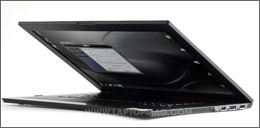
Click to enlarge
To the left of the power button is a button that resembles an infinity symbol; pressing it actives Dell's Latitude ON operating system. Based on Montavista Linux, this OS isn't powered by the Intel Core 2 Duo U9600 processor; rather, there's a second ARM-based CPU that runs this environment. When launched, four icons line the top of the screen: E-mail, Calendar, Address Book, and Web. After setting up the OS, it booted in 30 seconds; loading the Web browser took another 6 seconds. The Windows OS took just 50 seconds to launch, but the idea is that idle battery life in this mode can last for days instead of hours.
Overall, Latitude ON feels somewhat rudimentary compared to instant-on operating systems such as ASUS' Express Gate. Graphics are more basic, and options such as Skype and music aren't available. Even if you consider listening to tunes extraneous to a business environment, you can't make the same argument for Skype. Also, tasks such as setting up a wireless connection are more difficult. Whereas ASUS' Express Gate automatically finds networks, Dell'sLatitude ONrequires you to manually type in the network name when you launch it for the first time. However, we do like that you can use the Z600's mobile broadband connection in this OS as well.
Performance
Powered by an Ultra-Low Voltage 1.6-GHz Intel Core 2 Duo U9600 processor, 4GB of RAM, and dual 128GB solid state drives, the Z600 scored 3,503 in PCMark Vantage, which measures overall system performance. That's about130 points lower than the mainstream category average, and almost half that of the Lenovo ThinkPad T410 with discrete graphics(which has a Core i5 CPU) and the HP Elitebook 8440w. Still, the Z600 had more than enough power for everyday tasks such as surfing the Web, writing this review in Google Docs, and listening to music.
Transcoding a 114MB MPEG-4 to AVI using Oxelon Media Converter, a multithreaded app, took 1 minute and 33 seconds, about 40 seconds longer than the category average; however, that figure is made up of mainly Core i5 and Core i7 notebooks, which are much more powerful.
Not surprisingly, the dual 128GB SSDs were blazing fast, copying a 4.97GB folder of multimedia at a rate of 38.0 MBps. That showing is17.6 MBps faster than the category average, but it's well below the SSD in the Lenovo ThinkPad T400s (66.0 MBps). Still, the Z600 booted Windows 7 Ultimate in a speedy 50 seconds.
As this is a business-minded notebook, graphics aren't of primary importance, so we weren't overly disappointed with the Z600's score of 853 in 3DMark06--over 2,300 points below the mainstream average, and more in line with the ultraportable average. In World of Warcraft, the Z600's Intel GMA 4500MHD GPU mustered just 20 frames per second at a resolution of 1024 x 768; Ion-powered netbooks fared better.
Battery Life and Wi-Fi
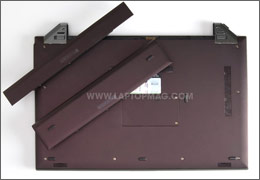
Click to enlarge
For a system designed to be portable, we were somewhat disappointed with the Z600's endurance; its extended eight-cell battery lasted just 3:57. While that's about 20 minutes longer than the mainstream average, the Lenovo ThinkPad T410 with integrated graphics and an extended nine-cell battery lasted 6:02. Using the smaller four-cell battery, the Z600 lasted for just 1:55. Though that will reduce the weight to just 4.6 pounds, it's not worth the sacrifice. We will update this review once we've tested the battery life in instant-on mode.
The Z600's Intel WiFi Link 5300 802.11a/g/n wireless card exhibited excellent throughput of 42.8 and 27.9 Mbps at 15 and 50 feet from our router, respectively. Users can also opt for wireless broadband from AT&T or Verizon Wireless for $125; both options include GPS.
Green Testing
Recharging the Z600's eight-cell battery took an interminable 5 hours and 41 minutes; during that time, the notebook used an average of 44.0 watts. Owing to the length of its recharging time and short endurance, the Z600's LAPTOP Battery Efficiency Rating was quite poor: its score of 63.5 is about 20 points higher than the mainstream average, and more akin to a desktop replacement. However, its EPEAT Gold rating puts it in the upper echelon for notebooks.
Wireless Charging Stand and Dock
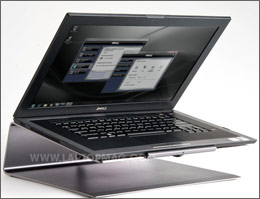
Click to enlarge
Our configuration of the Z600 includes the Dell Wireless Inductive Charging Stand; purchasing the stand separately costs $349, but we're not sure it's worth the investment. While the metal stand is attractive and raises the notebook up to a comfortable level, there's no real benefit to using the stand to recharge the notebook. In fact, it took 6 hours and 18 minutes to completely recharge the nine-cell battery using the pad, and upon lifting the notebook, the top of the dock measured a scorching 125 degrees Fahrenheit. While it's unlikely that your skin will come into contact with the pad, we wonder what those temperatures will do to the notebook after an extended period of time.
Another accessory that came with our configuration is the Dell Wireless Docking Station ($349). Made of glossy black plastic, the dock measures 6.2 x 4.5 x 1.0 inches; standing upright, this accessory looks like a miniature router. The front has two USB and headphone and mic ports, and the back has a small antenna, two more USB ports, a miniUSB port, and a
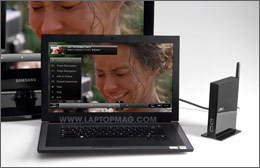
Click to enlargeDVI port. Using a VGA to DVI adapter (our Samsung HDTV lacked DVI), the notebook instantly detected the second display and output the image. Videos streamed smoothly, and when we hooked up external speakers to the dock, audio was mostly in sync.
While we like that the Dell Wireless Docking Station provides extra ports and offers more resolution than Intel's Wireless Display technology (found in new Core i5 notebooks like the Toshiba Satellite E205), some may prefer the latter technology because you only need a single HDMI cable going from the receiver box to your TV or larger display. However, the maximum supported resolution of the Wireless Docking Station (1680 x 1050) is higher than the 720p resolution offered by Intel's WiDi.
Security
Dell includes a number of security measures with the Z600. Most noticeable is the fingerprint reader to the right of the keyboard, and the Smart Card reader to the right of the touchpad. Software includes Dell ControlPoint system manager, TPM 1.27, and Dell's FaceAware facial recognition software.
Configurations
If you think that $3,806 is a lot to spend on the Latitude Z600, you'll be glad to know it starts at $1,799. For that price you get a 1.4-GHz Intel Core 2 Duo SU9400 CPU, Windows 7 Professional, and a single 64GB SSD. You can increase the SSD in our configuration to 256GB for an additional $250, and add a second 256 GB SSD, too. As the Z600 does not include an internal optical drive, consumers can purchase a slot-loading 4X Blu-ray drive for $448. A fully tricked out Z600 (1.6-GHz SU9600 CPU, Win 7 Ultimate, Intel vPro Secure Advanced Hardware Enabled Systems Management, two 256GB SSDs, docking station, charging stand, Blu-ray) brings the price to $4,858.
Software and Warranty
Very little extraneous software is preloaded on the Z600, and the apps that are included are quite useful. A number of these are Dell's own utilities: Capture, which can scan in business cards and documents using the webcam, the Wireless USB Manager, Roxio Creator DE, and, the ubiquitous Norton Internet Security 2010.
The Z600 comes with a three-year limited hardware warranty that includesthree years of on-site service. Users can also upgrade to four and five-year premium plans. To see how Dell fared in our Tech Support Showdown, click here.
Verdict
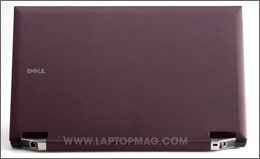
Click to enlarge
The Dell Latitude Z600 is indeed a high-class executive system. Its black-cherry exterior, smooth and comfortable keyboard, and luxe accessories definitely make it look the part of a mogul's laptop. We were also impressed by the blazing solid state drives, as well as the convenient EdgeTouch controls. However, although Z600 has the screen size of a desktop replacement notebook, it performs like an ultraportable--without the benefit of long battery life. We also don't think Dell's Wireless Charging Stand is worth the splurge, although the wirelessdocking stationcould come in handy if you hate clutter. As a status symbol, the Latitude Z600 will be worth the investment for some, especially if you like the idea of owning the world's thinnest and lightest 16-inch notebook. But in some ways this system feels like the business version of the original Dell Adamo: more style than substance.
Dell Latitude Z600 Specs
| Bluetooth | Bluetooth 2.1 |
| Brand | Dell |
| CPU | 1.6-GHz Intel Core 2 Duo SU9600 |
| Company Website | www.dell.com |
| Display Size | 16 |
| Graphics Card | Intel Graphics Media Accelerator 4500MHD |
| Hard Drive Size | 256GB |
| Hard Drive Type | Dual SSDs |
| Mobile Broadband | Verizon EV-DO Rev A |
| Native Resolution | 1600x900 |
| Operating System | MS Windows 7 Ultimate |
| Ports (excluding USB) | eSATA/USB, Headphone, Ethernet, DisplayPort |
| RAM | 4GB |
| RAM Upgradable to | 4GB |
| Size | 15.6 x 10.7 x 0.6 inches |
| USB Ports | 2 |
| Video Memory | Shared |
| Warranty/Support | 3 years |
| Weight | 5.0 pounds (8-cell battery); 4.6 pounds (4-cell battery) |
| Wi-Fi | 802.11a/g/n |
